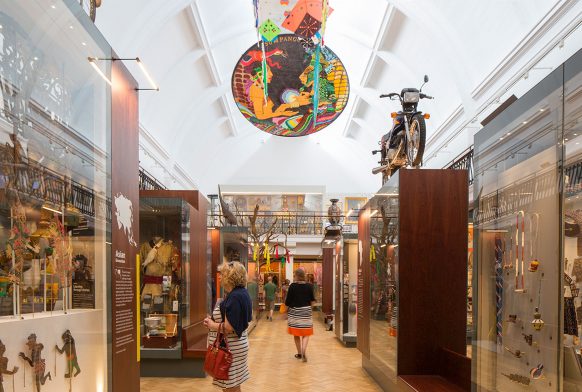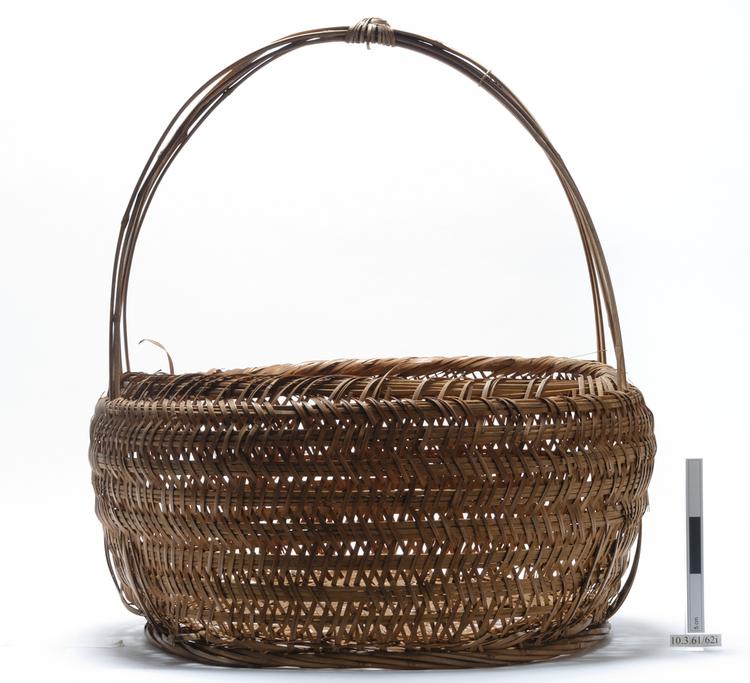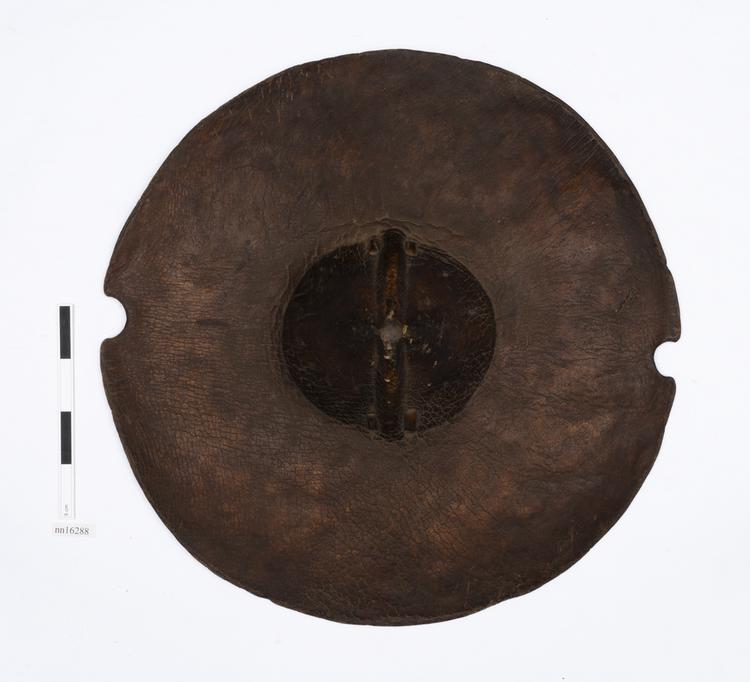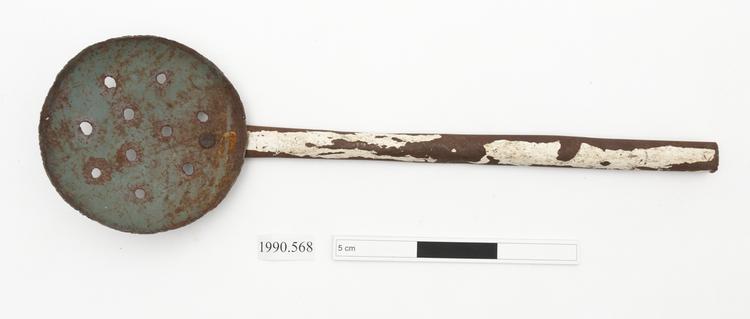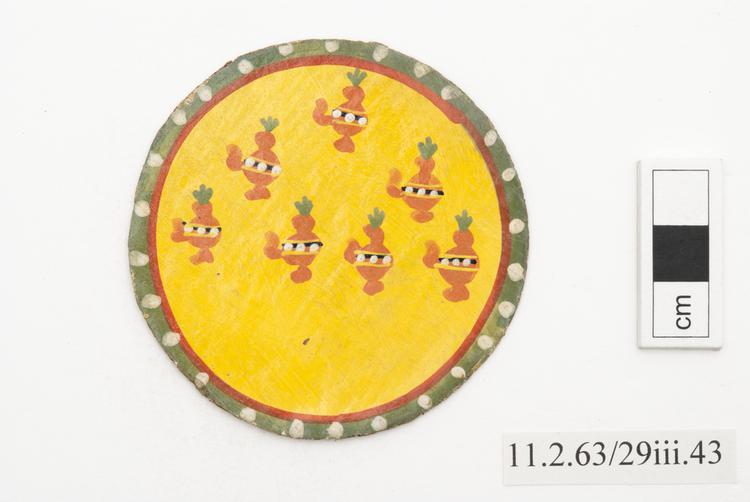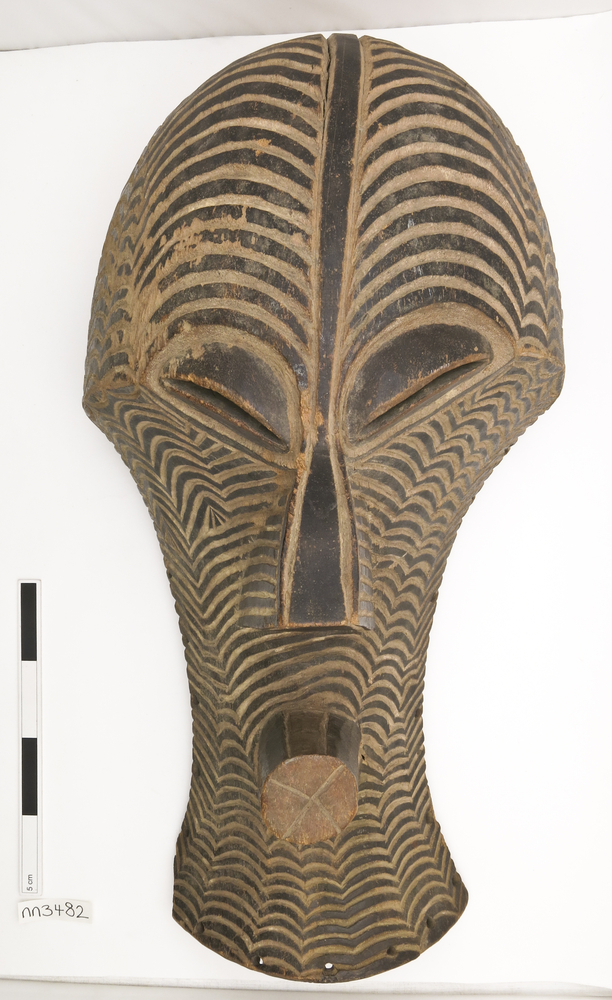
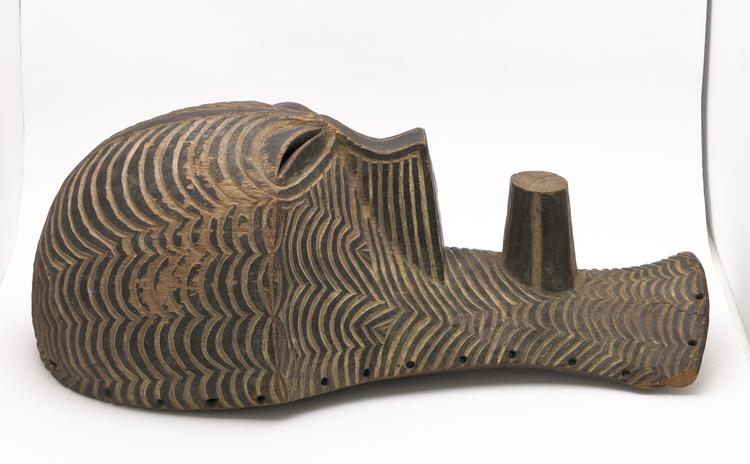
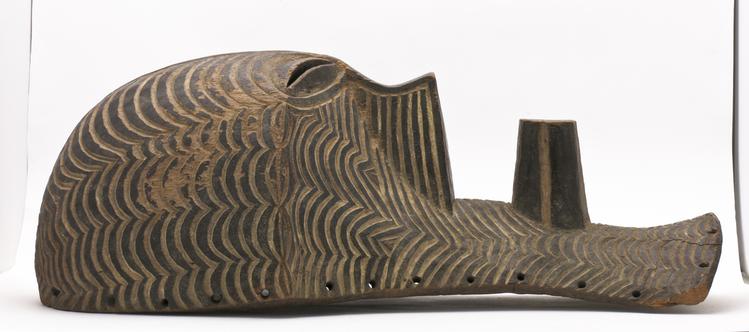
Wooden mask in the form of an elongated face, with incised decoration covering the surface.
The Songye-speaking people live in the centre of the Democratic Republic of the Congo, a vast savannah land, with vegetation which is traversed by three large rivers: the Lomami, Lualaba and Sankuru. Small communities belonging to forty or so districts live along these rivers and the Songye people are essentially farmers who also raise animals such as goats, chickens and sheep. Despite their location along the rivers, the Songye-speaking people do not fish, as they bury their ancestors in water, which makes it sacred to them. The Kifwebe masks are police masks, used during ceremonies in which they instruct the community, acting as a form of social control as well as teaching essential life skills and rules during initiation rituals. There are supposedly three types, the male, female and younger male – this particular item (nn3482) is likely to be a male. Kifwebe striated face masks are visually striking and distinctive – made of wood, they have a series of deep incisions that also suggest facial scarification. The Songye-speaking people live in the centre of the Democratic Republic of the Congo, a vast savannah land, with vegetation which is traversed by three large rivers: the Lomami, Lualaba and Sankuru. Small communities belonging to forty or so districts live along these rivers and the Songye people are essentially farmers who also raise animals such as goats, chickens and sheep. Despite their location along the rivers, the Songye-speaking people do not fish, as they bury their ancestors in water, which makes it sacred to them. The Kifwebe masks are police masks, used during ceremonies in which they instruct the community, acting as a form of social control as well as teaching essential life skills and rules during initiation rituals. There are supposedly three types, the male, female and younger male – this particular item (nn3482) is likely to be a male. Kifwebe striated face masks are visually striking and distinctive – made of wood, they have a series of deep incisions that also suggest facial scarification.



